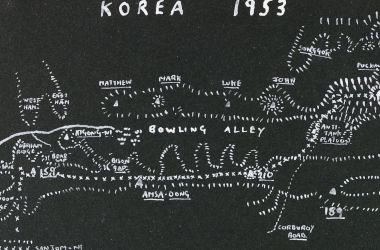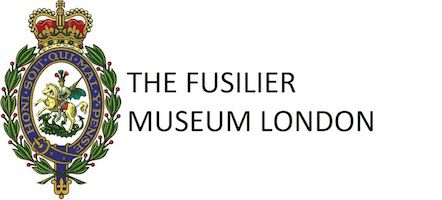When I was approached to update the regimental history of the Royal Fusiliers it was to be centred around the experience of the regiment in Korea and its stations since 1945. I must admit I did not know much about the Korean war, the ‘forgotten war’. Much less did I know about the role of the Royal Fusiliers in the deadlocked trench warfare that succeeded the mobile phases of the war in 1950-1952. Little known but un-verified fact; a draft of Royal Fusiliers were posted to the Gloucester Regiment and fought at Gloster Hill in 1951 where many accolades were won. The museum has a Chinese Bugle which was captured at this battle, which was presented by a Fusilier who served with the Gloucester Regiment. The Royal Fusilier battalion was brought into the campaign in 1952 when peace overtures were being made between North Korea (and China) and the Americans (the United Nations forces). Does this seem familiar? Unlike the First World War when an Armistice was signed when the Germans were on the run but not beaten militarily. This lead to the Treaty of Versailles in which the Allies inflicted harsh terms on Germany which led to WW2, whereas in Korea we are still living with the consequences of there not being a Peace Treaty at all.
The Royal Fusilier battalion was brought into the campaign in 1952 when peace overtures were being made between North Korea (and China) and the Americans (the United Nations forces). Does this seem familiar? Unlike the First World War when an Armistice was signed when the Germans were on the run but not beaten militarily. This lead to the Treaty of Versailles in which the Allies inflicted harsh terms on Germany which led to WW2, whereas in Korea we are still living with the consequences of there not being a Peace Treaty at all.
The whole Commonwealth Division (in which the Royal Fusiliers were placed) position rested around a hill called the Hook. This guarded the road to Seoul. The Division’s position did not vary much during the year in which the regiment were in Korea and they moved in-between positions in this sector between the Inchon and Samichon rivers. The sector included Hill 355 in the north, the Bowling Alley, and the Samichon position. It was trench warfare, right out of the Great War. Patrolling was the order of the day (or night, as it was a nighttime war), and great effort was spent in dominating No Man’s Land, and many casualties caused and sustained. This changed in 1953 when a new Divisional commander refused to ordain such losses under his command for limited political ends. The whole effort in the autumn of 1952 focused on Operation Pimlico. This was a raid on a hill held by the Chinese which ran into a large Chinese force which was trying to launch a raid on our lines, this focused around the holding of a small knoll called the Mound by a platoon of Royal Fusiliers. Great fortitude was shown by the wireless operator George Hodgkinson, who refused to move off the highest part of the Mound and relayed orders throughout the night, even whilst wounded. He was awarded the D.C.M. after all the officers were wounded or killed and he was effectively in command.
The whole effort in the autumn of 1952 focused on Operation Pimlico. This was a raid on a hill held by the Chinese which ran into a large Chinese force which was trying to launch a raid on our lines, this focused around the holding of a small knoll called the Mound by a platoon of Royal Fusiliers. Great fortitude was shown by the wireless operator George Hodgkinson, who refused to move off the highest part of the Mound and relayed orders throughout the night, even whilst wounded. He was awarded the D.C.M. after all the officers were wounded or killed and he was effectively in command.
Chinese attacks materialised and faded in the night; it was a platoon action with heavy artillery support. The raid itself was a failure, and the men were forbidden to talk about it until the 1970s. But in terms of honour achieved and everlasting fame, this event shaped the Battalion for the next fifteen years until it was amalgamated into R.R.F. in 1968. In fact, the greater ambition was made by the holding of the Hook in May and June 1953 when the battalion relieved the Duke of Wellington’s after a massive Chinese attack and held it under constant bombardment for seven days. This was the Regiment’s experience of Korea in a nutshell, but the strange thing was the trench warfare, in the 1950s; that must have been very unreal.

The Fusiliers in Korea
Oral history exhibition on the Korean War.
